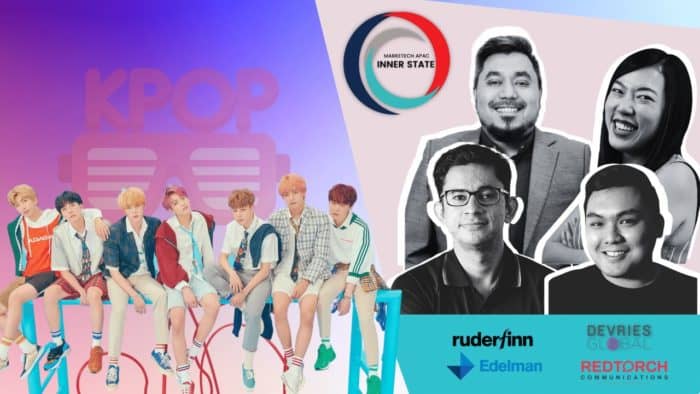In the futuristic sci-fi thriller Minority Report, Tom Cruise’s character walks through a shopping mall equipped with retinal scanners that immediately serve up holographic advertisements tailored to his personal needs and tastes. It’s intrusive, unnerving, yet feels incredibly believable. That day has finally come, beginning in e-commerce.
With the explosive growth of Large Language Models (LLMs), AI has become the buzzword of the decade, promising revolutionary changes across industries. Nowhere is this more evident than in the realm of e-commerce, where AI holds the tantalising promise of hyper-personalised experiences that can dramatically boost customer satisfaction and loyalty. However, as we stand on the precipice of this AI-driven revolution, it’s crucial to recognise that beneath the hype lies a landscape fraught with hidden challenges and ethical considerations.
The potential is undeniably exciting. It offers unprecedented capabilities to analyse vast amounts of customer data, identify patterns and preferences, and deliver highly tailored experiences. Through sophisticated data analysis and predictive modelling, AI can anticipate customer needs and behaviours with uncanny accuracy. This allows for real-time personalisation of content, recommendations, and even user interfaces, creating a seamless and engaging customer journey.
Natural language processing, another key AI capability, is revolutionising customer interactions through chatbots and voice assistants, making brand engagement more conversational and intuitive. AI’s ability to optimise pricing based on individual customer value and willingness to pay opens up new avenues for dynamic pricing strategies. Moreover, AI-powered sentiment analysis can gauge customer emotions, enabling brands to provide appropriate responses and experiences that resonate on a deeper level.
An Overview of AI in E-Commerce
AI plays a crucial role in enhancing personalisation across various e-commerce domains, including traditional e-commerce, social commerce, retail media, and q-commerce. In e-commerce, AI-powered recommendation systems analyse vast amounts of customer data, such as browsing history, purchase patterns, and demographic information, to provide highly personalised product recommendations that are tailored to each individual’s preferences. This not only improves the customer experience but also drives increased sales and loyalty.
In the realm of social commerce, AI algorithms enable brands to create engaging and personalised shopping experiences by analysing user behaviour on social media platforms. By understanding individual preferences and interests, AI can deliver targeted content, product recommendations, and personalised promotions that resonate with each customer, fostering deeper connections and driving conversions.
Retail media, which refers to the use of a retailer’s owned media assets to deliver advertising, also benefits from AI-powered personalisation. AI algorithms can analyse customer data across multiple touchpoints, including the retailer’s website, mobile app, and in-store interactions, to deliver personalised ad experiences that are more relevant and effective for both the customer and the advertiser.
In the emerging field of q-commerce, or quick commerce, AI plays a crucial role in enhancing personalisation. By leveraging real-time data on customer location, purchase history, and immediate needs, AI can provide hyper-personalized product recommendations and seamless checkout experiences, ensuring that customers receive the right products at the right time, ultimately improving satisfaction and driving repeat business.
These applications paint a picture of a future where marketing becomes an almost magical experience, anticipating our desires before we even articulate them. However, this rosy vision comes with a significant caveat: the ethical implications of such powerful personalisation tools are profound and cannot be ignored.
Understanding Hyper-Personalisation Perils
The collection and use of vast amounts of personal data, essential for AI-driven personalisation, raise serious concerns about privacy and data security. The potential for this data to be misused, either through breaches or unethical practices, is a real and present danger. Moreover, the opacity of many AI algorithms creates a “black box” problem, where neither consumers nor regulators fully understand how decisions are being made about them.
There’s also the risk of creating filter bubbles, where AI-driven personalisation narrows the range of experiences and information presented to consumers, potentially reinforcing biases and limiting exposure to diverse perspectives. The use of AI in dynamic pricing, while potentially beneficial for businesses, raises questions about fairness and could lead to price discrimination.
Given these challenges, it’s clear that the path forward for AI in marketing must be one of responsible innovation. We need to strike a delicate balance between leveraging the powerful capabilities of AI and upholding ethical standards that protect consumer rights and maintain public trust.
Transparency and Responsible Use
Transparency should be at the forefront of this approach. Companies need to clearly communicate what data they’re collecting and how it’s being used. Privacy policies should be easy to understand, not buried in legal jargon. Customers should have control over their data, including the right to access, correct, and delete it. Robust consent processes and clear opt-out mechanisms for personalised marketing are essential.
Data minimisation is another crucial principle. Companies should only collect data necessary for specific, stated purposes and implement retention policies to delete unnecessary information. This not only respects consumer privacy but also reduces the risk and potential impact of data breaches.
Algorithmic transparency, while challenging to implement fully, should be a goal. Where possible, companies should provide explanations of how their AI systems make decisions. Regular audits of AI systems for bias and fairness are crucial to ensure that personalisation doesn’t turn into discrimination.
Ethical considerations need to be baked into the AI development process from the start, not added as an afterthought. This includes establishing clear ethical guidelines for AI use in marketing and ensuring diverse teams are involved in AI development to mitigate bias.
Don’t Lose the Human
Human oversight remains crucial. While AI can make rapid decisions, human supervision and review processes are necessary to catch errors, address nuanced situations, and ensure alignment with brand values and ethical standards.
Strong data security practices are non-negotiable. As AI systems handle increasingly sensitive customer information, regular updates and testing of security protocols are essential to protect against evolving threats.
Accountability needs to be clear and concrete. Organisations should assign clear responsibility for AI systems and establish processes for addressing AI-related issues or complaints. Regular ethical impact assessments can help companies understand and mitigate the broader societal impacts of their AI systems.
Education is key, both internally and externally. Staff need to be kept updated on AI ethics and best practices, while customers should be educated about how AI is used in marketing. This transparency can help build trust and enable consumers to make informed choices about their engagement with AI-driven marketing.
Collaboration with regulators and industry bodies is essential to develop appropriate guidelines and standards. As the AI landscape evolves rapidly, ongoing dialogue between businesses, policymakers, and consumer advocates is crucial to ensure that regulations keep pace with technological advancements.
The Way Forward
While the challenges are significant, there’s reason for optimism. The conversation around ethical AI is gaining momentum, with more companies recognising that responsible AI practices are not just ethically necessary but also good for business in the long run. Consumers are becoming more aware and demanding of their digital rights, pushing companies towards more transparent and ethical practices.
The future of AI in marketing is not a binary choice between innovation and ethics – it’s about finding ways to pursue both simultaneously. By embracing transparent and responsible AI practices, companies can unlock the full potential of personalised marketing while building and maintaining the trust of their customers.
As we move forward, it’s crucial to remember that the goal of AI in marketing should not just be to sell more effectively, but to create genuine value for consumers. When implemented ethically and responsibly, AI has the potential to create marketing experiences that are not just personalised, but truly personal – experiences that respect individual preferences, protect privacy, and contribute positively to people’s lives.
The path ahead is challenging, but it’s also filled with opportunity. By navigating this path thoughtfully and ethically, we can harness the power of AI to create a future of marketing that is both innovative and responsible, serving the needs of businesses and consumers alike. The journey towards ethical AI in marketing is not just a technological challenge, but a human one – and it’s a journey we must undertake together.

This thought leadership is written by David Ko, Managing Director at Ruder Finn Interactive Asia, the digital arm of Ruder Finn Asia.
MARKETECH APAC is leading the conversation on the future of e-commerce marketing strategies this 2024 and beyond with the E-Commerce Marketing in the Philippines 2024 conference on August 14, 2024 at Crowne Plaza Manila Galleria. Join us and become an integral part of a dynamic community committed to pushing the boundaries of innovation and fostering unparalleled growth in the e-commerce domain.








